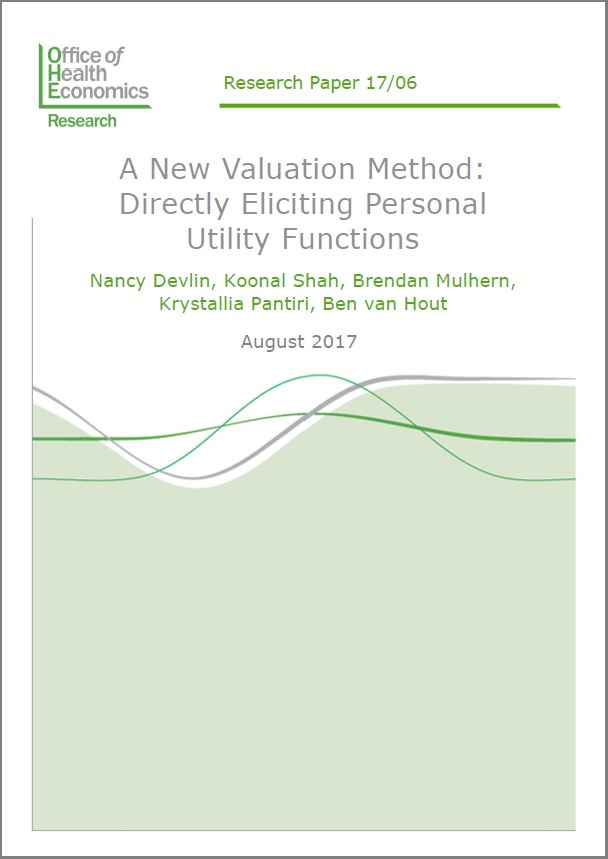Unlocking the Value of Combination Therapies

Standard methods for eliciting the preference data upon which value sets are based (e.g. time trade-off, standard gamble) generally have in common an aim to ‘uncover’ the preferences of survey respondents by asking them to evaluate a sub-set of health states. The responses…
Standard methods for eliciting the preference data upon which value sets are based (e.g. time trade-off, standard gamble) generally have in common an aim to ‘uncover’ the preferences of survey respondents by asking them to evaluate a sub-set of health states. The responses are then used to infer their preferences over all possible dimensions and levels. An alternative approach is to ask respondents directly about the relative importance to them of the dimensions, levels and interactions between them
This OHE Research Paper describes a new stated preference approach for directly eliciting personal utility functions (PUFs) from members of the general public. The approach focuses on helping respondents to reflect and deliberate on their preferences. A computer-based tool was developed and used to administer the questions via face-to-face interviews. The Research Paper reports the methods and findings of piloting work to test the feasibility and acceptability of the PUF approach for valuing a simplified version of the EQ-5D-5L, a measure of patient-reported outcomes.
The PUF approach appears to be feasible. The authors conclude that it has the potential to: (a) yield meaningful, well-informed preference data from respondents; and (b) provide individual preference data that can be aggregated to yield a social value set for the EQ-5D. The paper concludes by describing the research and testing needed to further refine some elements of the approach.
A revised version of this paper has been published in the European Journal of Health Economics and can be downloaded from: https://link.springer.com/article/10.1007/s10198-018-0993-z
Please cite as: Devlin, N.J., Shah, K.K., Mulhern, B.J. et al., 2018. A New Method for Valuing Health: Directly Eliciting Personal Utility Functions. European Journal of Health Economics, pp.1-14.
A New Valuation Method: Directly Eliciting Personal Utility Functions
Devlin, N., Shah, K., Mulhern, B., Pantiri, K. and van Hout, B.
(2017) A New Valuation Method: Directly Eliciting Personal Utility Functions. OHE Grant-Funded Research. Available from https://www.ohe.org/publications/new-valuation-method-directly-eliciting-personal-utility-functions/
